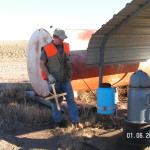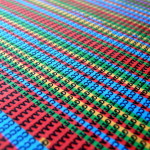 Here in the Santa Cruz mountains, poison oak is everywhere. My dog tromps through it, and I tromp after her. I feel fine. Presumably, this means I am one of the lucky 30 percent who are immune.
Here in the Santa Cruz mountains, poison oak is everywhere. My dog tromps through it, and I tromp after her. I feel fine. Presumably, this means I am one of the lucky 30 percent who are immune.
It also means the dog and I could be covered in poison oak oil, and I wouldn’t know. My first clue would be when my roommate and guests stopped speaking to me.
Others have it worse. Poison oak oil can hide on anything, and the rash usually takes a few days to develop, making it hard to pinpoint the source. One woman suffered repeated outbreaks for a year before figuring out that the oil was on her mailbox, according to Rebecca Braslau, a chemist at the University of California, Santa Cruz.
Braslau is working on a solution. Tired of getting rashes from her dog and her poison oak-immune husband, she developed a spray to reveal the invisible oil. The product is fluorescent, and it shines blue if you spray it on poison oak oil in the presence of ultraviolet light. It reacts with urushiol, the chemical in poison oak that makes people itch. Urushiol is also the problem chemical in poison ivy, so the spray reveals oils from both plants.
The University of California, Santa Cruz patented the spray in March of 2013, but more than a year later, it still isn’t on the market. I called Braslau for an update, and to see if I could persuade her to part with some samples.
“We don’t have samples,” she told me. “We have not tested the toxicity of it, and the reason for that is that I picked the wrong fluorescent dye.”
The dye Braslau chose for early product development reacts strongly with urushiol, but it also reacts with water. The glow from water is much fainter than the glow from poison oak, but Braslau is still worried it will confuse people.
“If your eye sees fluorescence, we want it to be only because there’s poison oak there, and not because you have water on your hiking boots,” said Braslau.
Now, Braslau and her students are working to find the right dye. The patent covers the entire chemical process, so even if she swaps out the dye, the university will still have rights to the final product. Then she will need collaborators to help test the spray for safety and bring it to market.
Braslau gets requests for samples two to four times a week. Gently, she turns them all down. She sympathizes with fellow sufferers, and she hopes her product will some day help people avoid getting poison oak rashes. “That would be great, because I know how awful it is,” said Braslau.
In the mean time, the dog and I will have to take our chances.







Comments are closed.